The Candaces of Meroe › Seshat » Ancient origins
Articles and Definitions › Contents
- The Candaces of Meroe › Who Was
- Seshat › Who Was
Ancient civilizations › Historical and archaeological sites
The Candaces of Meroe › Who Was
Definition and Origins
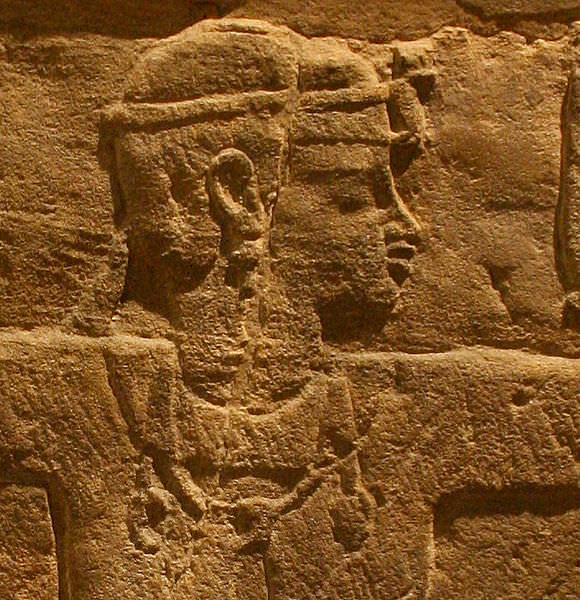
The Candaces of Meroe were the queens of the Kingdom of Kush who ruled from the city of Meroe c. 284 BCE-c. 314 CE - a number of whom ruled independently c. 170 BCE-c. 314 CE - in what is now Sudan. The title Candace is the Latinized version of the term Kentake or Kandake in Meroitic and may mean “Queen Regent” or “Queen Mother” but could also mean “Royal Woman”. Although the term seems to have originally referred to the mother of the king, from around c. 170 BCE it was also used to designate a female monarch who reigned independently.
The queens making up the Candaces of Meroe were the following:
- Shanakdakhete (rc 170 BCE)
- Amanirenas (rc 40-10 BCE)
- Amanishakheto (rc 10 BCE–1 CE)
- Amanitore (rc 1-c. 25 CE)
- Amantitere (rc 25-c. 41 CE)
- Amanikhatashan (r.. 62-c. 85 CE)
- Maleqorobar (rc 266-c. 283 CE)
- Lahideamani (rc 306-c. 314 CE)
A “Candace, queen of the Ethiopians” is mentioned in the Bible when the apostle Philip meets “a eunuch of great authority” under her reign and converts him to Christianity (Acts 8:27-39). In this passage, as in other ancient works mentioning the Candace, the royal title has often been confused with a personal name.
Prior to c. 284 BCE, kings ruled Kush from Meroe but the king Ergamenes (also known as Arkamani I, r. 295-275 BCE) instituted a number of reforms and among these seems to be the elevation of royal women to the position of queen. The title “Kentake” appears prior to Ergamenes' reign but there is no evidence of women reigning alongside a king – only of a royal woman who was the king's mother; following his reign, however, the title often refers to a female monarch. Male rulers follow Ergamenes in succession and seem to have had queens who co-ruled or exerted significant influence, but the queen Candace Shanakdakhete (rc 170 BCE) reigned independently and so did a number of women after her.
MEROE FLOURISHED AS THE CAPITAL OF THE KINGDOM OF KUSH BETWEEN C. 750 BCE – 350 CE & BECAME LEGENDARY AS A CITY OF FABULOUS WEALTH.
Meroe flourished as the capital of the Kingdom of Kush between c. 750 BCE – 350 CE and became legendary as a city of fabulous wealth. Located on the Nile in the region of modern-day Sudan, Meroe grew rich from trade and its ironworks and abundant grain supply ensured a steady production of goods others wanted and needed; but it was the monarchy, periodically controlled by women, that established and maintained the trade which encouraged such affluence.
The city began to decline due to overuse of the land and resources and had already passed its peak when it was invaded by the Axumites (from the Kingdom of Axum, located in present-day Ethiopia/Eritrea) in c. 330 CE and sacked. It was abandoned 20 years later c. 350 CE and the title of Candace vanishes from the historical record afterwards.
THE RISE OF MEROE & ERGAMENES
Meroe was originally an administrative center south of the Kushite capital city of Napata. In 590 BCE Napata was sacked by the Egyptian king Psammeticus II (r. 595-589 BCE) and the capital was moved to Meroe. Napata had been heavily influenced by Egyptian culture and religion – as the entire Kingdom of Kush was initially – due to close contact through trade and Egypt ’s repeated military campaigns in the region. This same paradigm was held to at Meroe where official documents were written in Egyptian, the gods who appeared in the temples were Egyptian, art was created in Egyptian styles, kings were depicted as Egyptian pharaohs, and their tombs were pyramids.
The city was already thriving before it became the capital of Kush, but afterwards its wealth would become legendary. Large fields yielded abundant crops which were easily transported up and down the nearby Nile in trade. Hunters stalked prey such as leopards and elephants whose skins and tusks were then traded upriver to Egypt. The principal industry, however, was ironworking and Meroitic tools and weapons became highly sought after and commanded a high price.
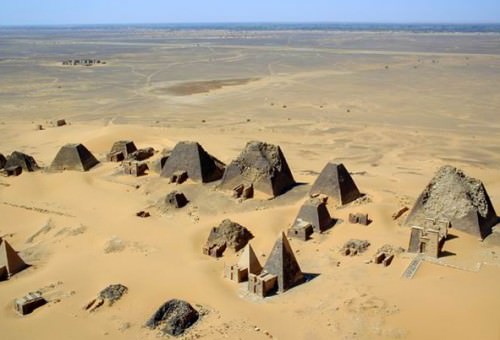
The Pyramids of Meroe
The kings of the city regulated trade and it is possible that they followed a model similar to Egypt's in which taxes and money from trade went to the government which then provided resources to the people. The iron industry boomed not only because of the expert craftsmen in the city but also the abundant natural resources of the enormous forests surrounding Meroe. Wood was required for the furnaces to smelt the iron and also in the production of charcoal and these furnaces burned hot on a daily basis. Scholar Kevin Shillington notes:
To this day, huge mounds of waste slag from their smelting furnaces rise up alongside the modern railway to bear witness to the enormous iron output of the ancient kingdom of Meroe. Iron provided the farmers and hunters of Meroe with superior tools and weapons. The development and use of iron was thus partly responsible for the very success, growth, and wealth of the Meroitic kingdom. (44)
When Ergamenes came to the throne in 295 BCE, Meroe had already been prospering for centuries but his reforms would only improve upon the city's success. According to the historian Diodorus Siculus (1st century BCE), Ergamenes had studied Greek philosophy and was not inclined to blindly follow the religious traditions of his people. Among these traditions was the practice of the priests of Amun choosing the monarch, setting a span for that monarch's reign, and deciding when the king should die for the good of the people and make way for a successor.
ERGAMENES BROKE THE POWER OF THE PRIESTS OF AMUN & INITIATED FURTHER REFORMS TO DISTANCE MEROE FROM EGYPTIAN INFLUENCE.
The cult of Amun had been a powerful political force in Egypt for millennia and exerted the same kind of influence over the kings of Kush. At Napata, in fact, the Egyptian pharaoh Thutmose III (r. 1458-1425 BCE) built the temple of Amun which would become the most important religious site in the kingdom for centuries. As in Egypt, the priesthood seems to have been tax-exempt and so were able to accrue significant wealth and influence.
Ergamenes broke the priests' power through direct action, not legislation, by arriving at the temple at Napata with an armed force and slaughtering them all. He then discarded the tradition of the priesthood's influence over the king, though maintaining the cult of Amun, and initiated further reforms to distance Meroe from Egyptian influence.
The gods, though still bearing some evidence of Egyptian culture, begin to appear as indigenous deities during his reign.Pyramids take on a uniquely Meroitic style of architecture. Kings and their queens appear in Meroitic attire and the art of the period shifts away from Egyptian to a distinctly indigenous style. Most importantly, Egyptian hieroglyphics disappear during Ergamenes' reign to be replaced by Meroitic script. This reform is significant because this script has not yet been deciphered and, because of this, the history of the latter centuries of the Kingdom of Kush is obscured.
It is clear that Kush had armies but very little is known about their organization. There was obviously a strong central government but daily administrative practices and even the process of succession is unclear. Trade flourished but precisely how it was conducted is unknown. The names of the rulers of Meroe and their probable reigns were pieced together by the archaeologist George A. Reisner (1867-1942 CE) who excavated Napata and Meroe and whose conclusions are still accepted for the most part but, even so, there are gaps and contradictions in his narrative which could only be resolved by a written history of the culture.
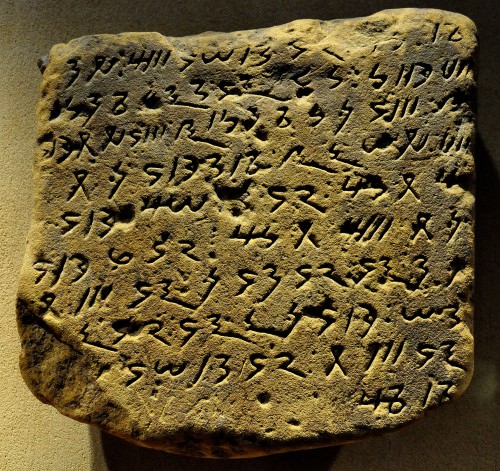
Cursive Block from Meroe
It is this lack of such a history which makes a discussion of the Candaces of Meroe so challenging. It appears that the practice in Meroe was that the brother of the king succeeded him, not the king's son, and yet the title of Candace seems to have originally referred to the king's mother which, according to scholar Derek A. Welsby, designates “the mother of the crown prince, ie the mother of the next king” (26). Since a Candace was also the wife of a reigning king this interpretation would mean that a king's son would succeed him and yet this does not seem to be the case. Welsby writes:
The evidence we have suggests that, even with a `legal' succession, there were no hard and fast rules for the choice of the next monarch and this can only have led to confusion and potential or actual conflict during the transfer of power. (27)
Whether there was such conflict, however, is far from clear. Evidence suggests continuing tension between the throne and temple, and possibly between successors, but no consensus can be reached on its interpretation. It may be that the erasure of names and destruction of certain monuments was due to conflict in dynastic succession or to the priests trying to reassert their power but just as easily may not have anything to do with either. It is also unknown exactly how much influence a queen in Meroe had prior to Ergamenes' reign; all that is known for certain is that after his reign some female rulers wielded considerable power and Meroe flourished accordingly.
THE CANDACES OF MEROE
Shanakdakhete (rc 170 BCE): The first queen to rule independently was Shanakdakhete (also given as Shanakdakheto) who appears in battle dress leading her armies. Under her reign, Meroe expanded its borders and the economy boomed. She may have performed a religious-political function along the lines of the position of God's Wife of Amun in Egypt (the female counterpart to the High Priest of Amun). Her adherence to Egyptian traditions is evident in her inscriptions where she refers to herself as “Son of Ra, Lord of the Two Lands, beloved of Ma'at” which is a common Egyptian designation. She is depicted with a young man, clearly a crown prince, who may be her successor Tanyidamani (dates unclear) but this is speculation. It is also unclear whether Tanyidamani even was her successor.
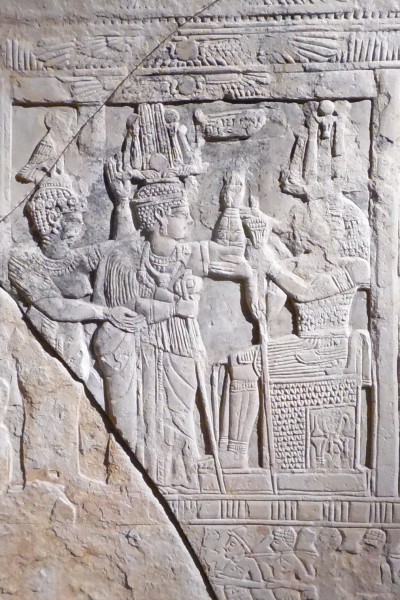
Candace Amanishakheto of Meroe
Amanirenas (rc 40-10 BCE): Amanirenas is best known as the queen who won favorable terms from Augustus Caesar (r. 27 BCE-14 CE) following the conflict known as the Meroitic War (27-22 BCE) between Kush and Rome. The war began in response to Kushite raiding parties making incursions into Roman Egypt. Rome had annexed Egypt as a province following the Battle of Actium in 31 BCE and it quickly became one of the new empire ’s most critical territories as it supplied Rome with an abundance of grain. The Roman prefect of Egypt, Gaius Petronius responded to the raids by invading Kush around 22 BCE and destroying the city of Napata. Amanirenas was in no way cowed and retaliated with further aggression. She is depicted as a courageous queen, blind in one eye, and a skilled negotiator. Following the conflict, her control of the terms is evident in Rome's respect in the peace talks and an increase in trade between Rome and Meroe. Amanirenas had captured a number of statues from Egypt, among them many of Augustus, which she returned following the peace; but the head of one she buried under the steps of a temple so that people would walk over Augustus in their daily visits. This is the famous Meroe Head now housed in the British Museum.
Amanishakheto (rc 10 BCE–1 CE): Little is known of Amanishakheto outside of her lavish grave goods of ornate jewelry. Her tomb was among the many in Meroe broken into and destroyed by the notorious treasure hunter Giuseppe Ferlini (1797-1870 CE) who had no interest in history or preservation and was only seeking gold and artifacts he could sell for a high price.Ruined inscriptions and reliefs from her tomb show her as a powerful queen who ruled independently but details of her reign have been lost.
Amanitore (rc 1-c. 25 CE): Amanitore reigned over the most prosperous period of Meroe's history. She was able to rebuild the Temple of Amun at Napata and renovated the large temple to the god in Meroe. Trade was at its height as evidenced by grave goods and other artifacts from the period and the iron industry and agriculture flourished as attested to by the amount of waste slag and improved irrigation canals dug during this time. She is depicted with her co-ruler King Natakamani but it is unclear if he was her husband or son and it seems she reigned alone later. She is depicted on her temple wall at Naqa conquering her enemies as a warrior queen. She may be the Candace referenced in Acts 8:27 of the Bible (mentioned at the start of this article) but this is contested; it is more likely that queen was Amantitere.
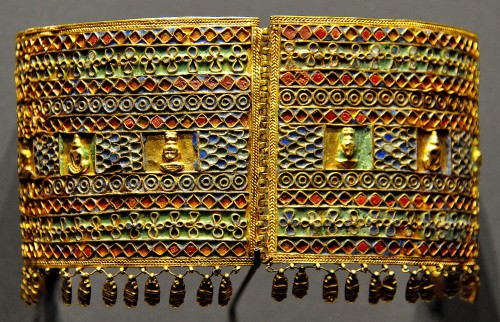
Armlet from Meroe
Amantitere (rc 25-c. 41 CE): Amantitere is the queen most often identified as the Candace in Acts 8:27. It has been suggested that she may have been Jewish only based on the passage in the Bible in which her eunuch, encountered by the apostle Philip, is reading the Book of Isaiah. There is no evidence in Meroe itself which supports the existence of a Jewish community but such communities did exist throughout Kush in small numbers. The biblical passage has also been cited to prove that Amantitere ruled alone since it states her eunuch had “great authority” and was in charge of her treasury but those statements hardly prove an autonomous queen any more than the eunuch's reading of Isaiah argues for her Judaism. Nothing is known of her reign but physical evidence from the period shows a high degree of affluence.
Amanikhatashan (rc 62-c. 85 CE): Nothing is known of her reign except for the military aid she provided to Rome during the First Jewish-Roman War of 66-73 CE. She sent Kushite cavalry but most likely also sent archers since the Kushite archers were legendary for their skill. One of the early Egyptian names for the region of Kush, in fact, was Ta-Sety (“The Land of the Bow”) for this reason. Nothing else is known of her reign but, like other later Candaces, she was most likely associated with the Egyptian goddess Nut as a High Priestess. Nut was the sky goddess who personified the canopy of the heavens and was mother to the primary deities Osiris, Isis, Set, Nephthys, and Horus the Elder. Although Egyptian script fell out of use during Ergamenes' reign, Egyptian gods such as Amun, Nut, and others continued to be venerated. It is possible, though far from clear, that Amanikhatashan would have served as the most powerful religious figure in Meroe as priestess of Nut.
Maleqorobar (rc 266-c. 283 CE) and Lahideamani (rc 306-c. 314 CE): Nothing is known of the reigns of these two queens.They are known to have ruled over Meroe during its decline but no other details have come to light. Meroe's wealth and prestige began to wane c. 200 CE when Rome elevated the Kingdom of Axum in Ethiopia to its primary partner in trade and Meroe was slighted. Exactly why Rome chose this course is unclear but part of the reason could have been the overuse of the land surrounding the city which depleted its resources. The forests had been used up in supplying fuel for the iron industry and the fields were depleted of nutrients through steady farming and overgrazing of livestock. In c. 330 CE Meroe was invaded by Axum, most likely under their king Ezana, and sacked; it was deserted c. 350 CE.
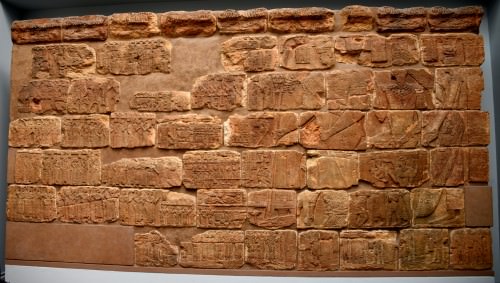
Relief from the Interior of the Funerary Chapel of a Meroe Queen
CONCLUSION
In 1834 CE, when Giuseppe Ferlini looted the treasures of Meroe he could find no buyers because the European market refused to believe that a black African kingdom had produced such incredible works. Egypt had long been “whitewashed” and was considered distinct from kingdoms to the south such as Kush which was associated with black Africa. Since it was mentioned in the Bible, Egypt, like Palestine, was routinely depicted as having been inhabited by white people by Europeans and Americans who had grown comfortable worshipping a white Jesus and honoring a white Moses but they never saw the need to extend this perceived “whiteness” all the way down the continent of Africa.
Almost one hundred years later, when George A. Reisner excavated Meroe, he concluded that the ruling class of Meroe were light-skinned people reigning over the “ignorant” black population who were elevated only by their monarchs exposing them to Egyptian culture. Reisner concluded this for the same racist reasons the white Europeans of Ferlini's time dismissed his artifacts. Even in the mid-20th century CE it was inconceivable to the scholarly community that a black-skinned people could have created a civilization such as the Kushite Kingdom of Meroe.
This same paradigm has been followed regarding the female rulers of that kingdom. It has been suggested that the Candace was a co-ruler with a male king and instances of a woman ruling alone are simply cases of a regent holding the throne for her son. This type of scenario is certainly possible - as noted, the Meroitic script has not been deciphered and the history of Meroe is far from clear - but in respect to the monarchy it seems quite apparent that women not only ruled but enabled the kingdom to prosper. The Candaces of Meroe, in fact, are among the most powerful and successful monarchs of the Kingdom of Kush and their skill in leadership was the equal, or better, of any king.
Seshat › Who Was
Definition and Origins
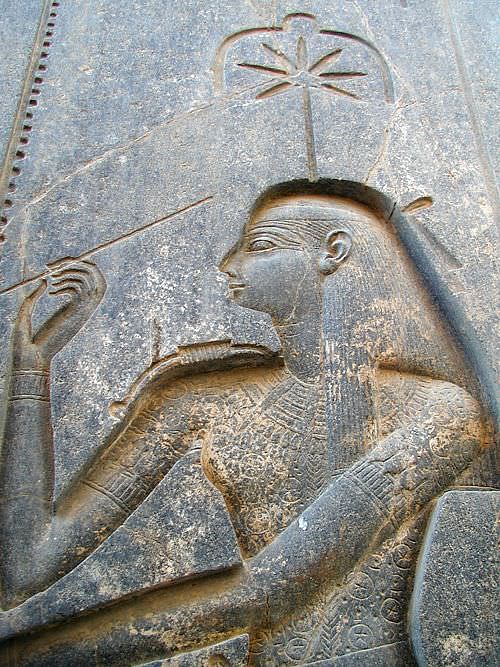
Seshat (also given as Sefkhet-Abwy and Seshet) is the Egyptian goddess of the written word. Her name literally means "female scribe" and she is regularly depicted as a woman wearing a leopard skin draped over her robe with a headdress of a seven-pointed star arched by a crescent in the form of a bow. This iconography has been interpreted as symbolizing supreme authority in that it is common in Egyptian legend and mythology for one to wear the skin of a defeated enemy to take on the foe's powers, stars were closely associated with the realm of the gods and their actions, and the number seven symbolized perfection and completeness. The leopard skin would represent her power over, and protection from, danger as leopards were a common predator. The crescent above her headdress, resembling a bow, could represent dexterity and precision, if one interprets it along the lines of archery, or simply divinity if one takes the symbol as representing light, along the lines of later depictions of saints with halos.
Among her responsibilities were record keeping, accounting, measurements, census-taking, patroness of libraries and librarians, keeper of the House of Life ( temple library, scriptorium, writer's workshop), Celestial Librarian, Mistress of builders (patroness of construction), and friend of the dead in the afterlife. She is often depicted as the consort (either wife or daughter) of Thoth, god of wisdom, writing, and various branches of knowledge. She first appears in the 2nd Dynasty (c. 2890- c. 2670 BCE) of the Early Dynastic Period (c. 3150 - c. 2613 BCE) as a goddess of writing and measurements assisting the king in the ritual known as "stretching of the cord" which preceeded the construction of a building, most often a temple.
The ancient Egyptians believed that what was done on earth was mirrored in the celestial realm of the gods. The daily life of an individual was only part of an eternal journey which would continue on past death. Seshat featured prominently in the concept of the eternal life granted to scribes through their works. When an author created a story, inscription, or book on earth, an ethereal copy was transferred to Seshat who placed it in the library of the gods; mortal writings were therefore also immortal. Seshat was also sometimes depicted helping Nephthys revive the deceased in the afterlife in prepration for their judgment by Osiris in the Hall of Truth. In this capacity, the goddess would have helped the new arrival recognize the spells of The Egyptian Book of the Dead, enabling the soul to move on toward the hope of paradise.
AMONG SESHAT'S RESPONSIBILITIES WERE RECORD KEEPING, ACCOUNTING, MEASUREMENTS, CENSUS-TAKING, AND PATRONESS OF LIBRARIES & LIBRARIANS.
Unlike the major gods of Egypt, Seshat never had her own temples, cult, or formal worship. Owing to the great value Egyptians placed on writing, however, and her part in the construction of temples and the afterlife, she was venerated widely through commonplace acts and daily rituals from the Early Dynastic Period to the last dynasty to rule Egypt, the Ptolemaic Dynasty of 323-30 BCE. Seshat is not as well known today as many of the other deities of ancient Egypt but, in her time, she was among the most important and widely recognized of the Egyptian pantheon.
RESPONSIBILITIES & DUTIES
According to one myth, the god Thoth was self-created at the beginning of time and, in his form as an ibis, lay the primordial egg which hatched creation. There are other versions of Thoth's birth as well but they all make mention of his vast knowledge and the great gift of writing he offered to humanity. Thoth was worshipped as early as the Pre-Dynastic Period (c. 6000- c. 3150 BCE) at a time when Egyptian writing consisted of pictographs, images representing specific objects, prior to their development into hieroglyphics, symbols representing sounds and concepts. At this time, Thoth seems to have been considered a god of wisdom and knowledge - as he remained - and once a writing system was developed it was attributed to him.
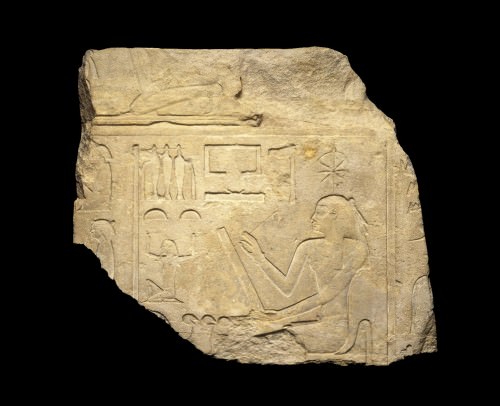
Seshat, Goddess of Writing
Perhaps because Thoth already had so many responsibilities, the Egyptians transferred the supervision of writing to the goddess Seshat. Egyptologist Richard H. Wilkinson notes how Seshat appears in reliefs and inscriptions in the Early Dynastic Period as a goddess of measurements and writing, clearly indicating she was already an important deity at that time:
Representations show the king involved in a foundation ritual known as "stretching the cord" which probably took place before work began on the construction of a temple or of any addition. These depictions usually show the king performing the rite with the help of Seshat, the goddess of writing and measurement, a mythical aspect which reinforced the king's central and unique role in the temple construction (Symbol & Magic, 174).
Seshat's responsibilities were many. As record-keeper she documented everyday events but, beginning in the Middle Kingdom (c. 2613-c. 2181 BCE), she also recorded the spoils of war in the form of animals and captives. She also kept track of tribute owed and tribute paid to the king and, beginning in the New Kingdom (c. 1570-1069 BCE), was closely associated with the pharaoh recording the years of his reign and his jubilee festivals. Egyptologist Rosalie David notes how she "wrote the king's name on the Persea tree, each leaf representing a year in his allotted lifespan" ( Religion and Magic, 411).Throughout all these periods, and later, her most important role was always as the goddess of precise measurements and all forms of the written word. The Egyptians placed great value on attention to detail and this was as true, if not more so, in writing as any other aspect of their lives.
IMPORTANCE OF WRITING IN EGYPT
The written word was considered a sacred art. The Greek designation hieroglyphics for the Egyptian writing system means "sacred carvings" and is a translation from the Egyptian phrase medu-netjer, "the god's words". Thoth had given the gift of writing to humanity and it was a mortal's responsibility to honor that gift by practicing the craft as precisely as possible. Rosalie David comments on the Egyptian ideal of writing:
The main purpose of writing was not decorative and it was not originally intended for literary or commercial use.Its most important function was to provide a means by which certain concepts or events could be brought into existence. The Egyptians believed that if something were comitted to writing it could be repeatedly "made to happen" by means of magic ( Handbook,199).
The spells of The Egyptian Book of the Dead are the best examples of this concept. The Book of the Dead is a guide through the afterlife written for the deceased. The spells the soul speaks help one to navigate through assorted dangers to arrive at the perfect paradise of the Field of Reeds. One needed to know how to avoid demons, how to transform one's self into various animals, and how to address the entities one would meet in the next world and so the spells had to be precise in order to work.
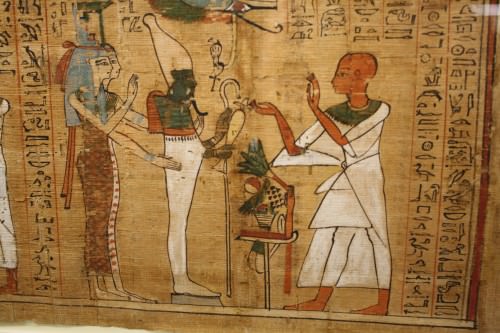
Book of the Dead of Aaneru
The Book of the Dead evolved from the Pyramid Texts of the Old Kingdom but, even before this time, one can see the Egyptian precision in writing at work in the Offering Lists and Autobiographies of tombs in the latter part of the Early Dynastic Period. Writing, as David notes, could bring concepts or events into existence - from a king's decree to a mythological tale to a law, a ritual, or an answered prayer - but it also held and made permanent that which had passed out of existence. Writing made the transitory world of change into one everlasting and eternal. The dead were not gone as long as their stories could be read in stone; nothing was ever really lost. The sacred carvings of the Egyptians were so important to them that they dedicated whole sections of temples or temple complexes to a literary institution known as The House of Life.
WRITING MADE PERMANENT THAT WHICH HAD PASSED OUT OF EXISTENCE. IT MADE THE TRANSITORY WORLD OF CHANGE INTO ONE EVERLASTING & ETERNAL.
HOUSE OF LIFE
The House of Life was a combination library, scriptorium, institute of higher learning, writer's workshop, print shop/copy center, publisher, and distributor. The Egyptians referred to the institution as Per- Ankh (literally "House of Life") and it is first mentioned in inscriptions from the Middle Kingdom. These were located in temples or temple complexes and would have been presided over by Seshat and Thoth no matter which god the temple was dedicated to. Since the gods were thought to literally reside in their temples, this arrangement would be comparable to having a permanent house-guest in one's home who takes care of responsibilities one may value but simply has not time for. Wilkinson notes how "by virtue of her role in the foundation ceremony [Seshat] was a part of every temple building" ( Complete Gods, 167). She was also an integral part of the temple through her supervision of the House of Life. Historian and Egyptologist Margaret Bunson describes their function:
Research was conducted in the House of Life because medical, astronomical, and mathematical texts perhaps were maintained there and copied by scribes. The institution served as a workshop where sacred books were composed and written by the ranking scholars of the times. It is possible that many of the texts were not kept in the Per-Ankh but discussed there and debated. The members of the institution's staff, all scribes, were considered the learned men of their age. Many were ranking priests in the various temples or noted physicians and served the various kings in many administrative capacities (204-205).
The scribes were most commonly associated with the sun god Ra in earlier times and with Osiris in later periods no matter which god resided in a particular temple. Bunson claims that probably only very important cities could support a Per-Ankh but other scholars, Rosalie David among them, cite evidence that "every sizable town had one" ( Handbook, 203). Bunson's theory is substantiated by the known structures identified as a Per-Ankh at Amarna, Edfu, and Abydos, all important cities in ancient Egypt, but this does not mean there were not others elsewhere; only that these have not been positively identified as yet.
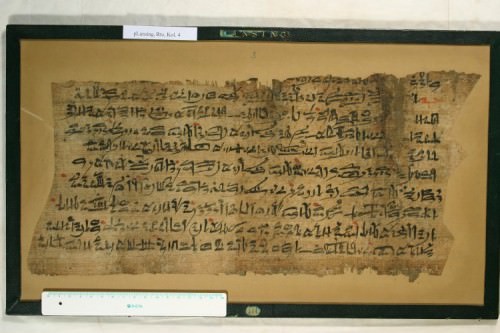
Papyrus Lansing
Seshat's role at the House of Life would have been the same as anywhere else: she would have received a copy of the texts written there for the library of the gods where it would be kept eternally. Rosalie David writes:
It would seem that the House of Life had both a practical use and a deeply religious significance. Its very title may reflect the power of life that was believed to exist in the divinely inspired writings composed, copied, and often stored there...In one ancient text the books in the House of Life are claimed not only to have the ability to renew life but actually to be able to provide the food and sustenance needed for the continuation of life ( Handbook, 203-204).
It is a certainty that the majority of the priests and scribes of the Per-Ankh were men but some scholars have pointed to evidence for female scribes. Since Seshat was herself a divine female scribe it would make sense that women practiced the art of writing as well as men.
FEMALE SCRIBES
Women in ancient Egypt enjoyed a level of equality unmatched in the ancient world. It is well substantiated that women could be, and were, scribes in that we have names of female physicians and images of women in important religious posts such as God's Wife of Amun ; both of these occupations required literacy. Egyptologist Joyce Tyldesley writes:
Although the only Egyptian woman to be depicted actually putting pen to paper was Seshat, the goddess of writing, several ladies were illustrated in close association with the traditional scribe's writing kit of palette and brushes. It is certainly beyond doubt that at least some of the daughters of the king were educated and the position of private tutor to a royal princess could be one of the highest honour (118-119).
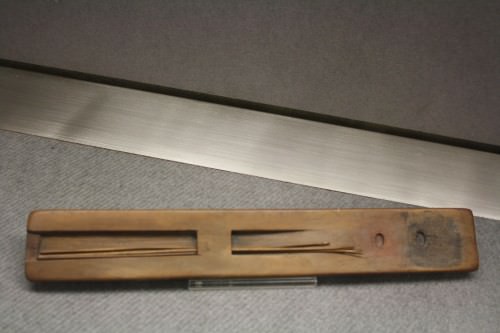
Egpytian Scribe's Palette
It is known, for example, that the female pharaoh Hatshepsut (1479-1458 BCE) hired a tutor for her daughter Neferu-Ra and that Queen Nefertiti (c. 1370- c. 1336 BCE) was literate as was her mother-in-law, Queen Tiye (1398-1338 BCE). Still, when it comes to the majority of women in Egypt, images and inscriptions leave some doubt as to how many could actually read and write. Egyptologist Gay Robins explains:
In a few New Kingdom scenes, women are depicted with scribal kits under their chairs and it has been suggested that the women were commemorating their ability to read and write. Unfortunately, in all cases but one, the woman is sitting with her husband or son in such a way that it would cramp the available space to put the kit under the man's chair, and so it may have been moved back to a place under the woman's. This happens in a similar scene when the man's dog is put under the woman's chair. So one cannot be sure that the scribal kit belonged to the woman. If there was a large group of literate women in ancient Egypt, they do not seem to have developed any surviving literary genres unique to themselves (113).
While this may be true, one cannot discount the possibility that female scribes were responsible for works of literature, either in creating or copying them. Egyptian society was quite conservative and written works generally adhered to a set structure and theme throughout the various periods of history. Even in the New Kingdom, where literature was more cosmopolitan, literature still adhered to a basic form which elevated Egyptian cultural values. Arguing that there were few female scribes based on there being no "women's literature" in ancient Egypt seems in error as the literature of the culture could hardly be considered "masculine" in any respect save for the kings' monumental inscriptions.
In the famous story of Osiris and his murder by Set it is not Osiris who is the hero of the tale but his sister-wife Isis. Although the best-known creation myth features the god Atum standing on the ben-ben at the beginning of time, an equally popular one in Egypt has the goddess Neith creating the world. Bastet, goddess of the hearth, home, women's health and secrets, was popular among both men and women and the goddess Hathor was regularly invoked by both at festivals, parties, and family gatherings. The deity who presided over the brewing of beer, the most popular drink in Egypt, was not male but the goddess Tenenet and the primary protector and defender of Isis when she was a single mother safe-guarding Horus was the goddess Serket. Seshat is only one of a number of female deities venerated in ancient Egypt reflecting the high degree of respect given to women and their abilities in a number of different areas of daily life.
SESHAT THE FOUNDATION
As noted, although Seshat never had a temple of her own, she was the foundation of the temples constructed in her role as Mistress of Builders and her participation in the ritual ceremony of "stretching the cord" which measured the dimensions of the structure to be raised. The floor plan of the temple was laid out through the "stretching the cord" ceremony after an appropriate area of land had been decided upon. Wilkinson comments on the process of situating a temple and Seshat's ritual role in this:
The rite involved the careful orientation of the temple by astronomical observation and measurement. Apparently this was usually accomplished by sighting the stars of a northern circumpolar constellation through a notched wooden instrument called a merkhet and thus acquiring a true north-south orientation which was commonly used for the temple's short axis. According to the texts, the king was assisted in this ritual by Seshat (or Sefkhet-Abwy), the scribal goddess of writing and measurement ( Temples, 38).
In addition to setting the foundation of the temple, Seshat also was responsible for the written works that temple produced and housed in its House of Life and, further, for gathering these works into her eternal library in the realm of the gods. Although Thoth was responsible for the initial gift of writing, his consort Seshat lovingly gathered the works that gift produced, presided over them in the libraries on earth, and kept them eternally safe on her shelves in the heavens. As writing was both a creative and preserving art, one which brought concepts to life and caused them to endure, which bestowed eternal life on both the writer and the subject, Seshat would be considered by the ancient Egyptians as the goddess responsible for the preservation of Egyptian culture and its enduring fascination among the people of the present day.
LICENSE:
Article based on information obtained from these sources:with permission from the Website Ancient History Encyclopedia
Content is available under License Creative Commons: Attribution-NonCommercial-ShareAlike 3.0 Unported. CC-BY-NC-SA License